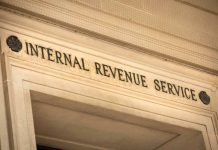
Creating a solid budget plan is the ABCs of basic financing. With it, you can learn how to manage your money, limit unessential spending, build your savings, and pay off debts. It’s easy to overspend if you don’t have a clear picture of what’s going in or coming out of your bank account. We’re going to show you a couple of basic steps on how to create a solid budget plan so that you don’t have to stress out about it.
Find A Good Downloadable Budget Sheet
People have their preferences when it comes to where they get their budget sheets from. If you want to use Microsoft Excel, that’s fine. There are other downloadable budget sheets that are all over the internet. It’s essential that you find the one that works best for you, so you can start working. Most importantly, make sure that it will be something that is easy for you to read, understand, and follow.
Add Up Your Income
First, it’s important to have a clear understanding of how much you’re making every month. So what you need to do is list every single source of income that you use, such as your salary, benefits, or side gigs. It’s important to be as precise and as detail-oriented as possible.
Consider Your Expenses
After you’ve ensured that you have listed all sources of income, begin listing your monthly expenses. It’s important to note that there are two types of monthly expenses. There are set expenses that you have every month, such as rent and utilities. Additionally, there are variable expenses that don’t have a fixed amount every month. For example, you don’t know how much you’ll spend on gas or groceries. But you could sort of make an educated guess! Sometimes you’ll find that old bills and bank statements are useful in helping you do this.
See What You’ve Got
Take your total income and subtract it by all the bills/expenses you paid and you’ll get your net income. Now, it’s very important that your net income always remains a positive number. If it turns negative, then that means there is a deficit and you’ll need to tighten your belt. It’s important that you have your net income every month written down, even if it is a negative figure.
As for handling your deficit, have a thorough look at all your expenses to see what you can cut back on and then do it. Ensure that what you are spending your money on is only the essentials.
If Everything Fails, Leave It to the Apps
Now, if you’re too lazy to do all of this work, budget apps might be the best solution for you. Fortunately, there is a lot that you can choose from. PocketGuard is a great app to use for budgeting. It’s great for simplifying the process of managing your personal finances and it’s user-friendly. Additionally, you can also try Mint, which has some great visuals and it also has alerts if it spots suspicious transactions. The app successfully puts all your bills in one place so that it is easy for you to follow in an organized manner.
If sophistication is what you’re looking for, then the next generation of budget apps would have to be Personal Capital. This app will not only assist you with your budget, but it will also help you to start investing. It has features that will enable you to monitor the activities of your saving, checking, and credit card accounts. This feature also works with loans, 401(k)s, and IRAs. Everything that has to do with your personal finances will be accessible in the palm of your hand!




























